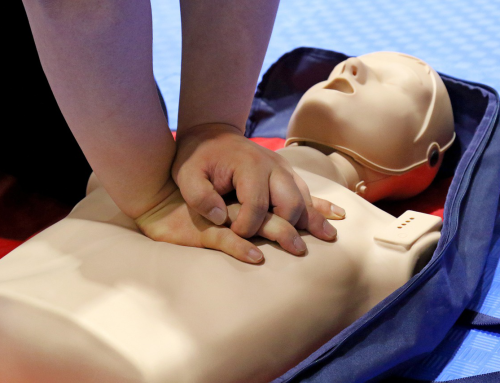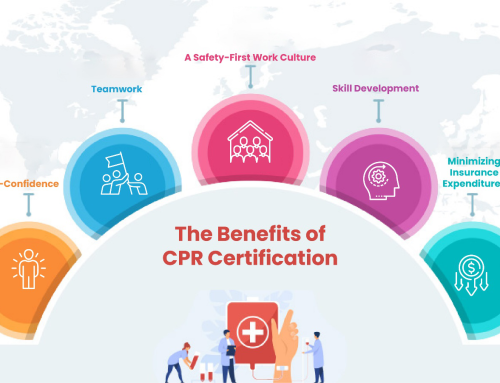Confined spaces, ubiquitous in industrial settings, pose significant risks to workers due to their inherent hazards. These spaces, characterized by restricted entry and exit points and limited ventilation, present environmental and safety challenges that demand meticulous planning and preparedness. Understanding the nature of confined spaces and their associated dangers is crucial to implementing effective safety measures, particularly in crafting comprehensive confined space rescue plans.
Understanding Confined Spaces
Confined spaces within industrial environments are characterized by their structural limitations, constraining workers’ movement and introducing potential hazards that demand meticulous evaluation. These spaces encompass diverse settings such as tanks, silos, sewers, and other enclosed areas, each presenting unique challenges.
Atmospheric hazards stand as a primary concern within confined spaces, encompassing the presence of toxic gases, insufficient oxygen levels, or airborne contaminants that swiftly jeopardize workers’ health and safety.
Physical hazards compound the risks, including restricted mobility, cramped quarters, challenging entry or exit points, and unstable structures that heighten the potential for accidents. Additionally, biological threats, such as moulds, bacteria, or pathogens thriving in confined environments, pose health risks to workers.
These distinctive features underline the complexity and diversity of hazards present in confined spaces, necessitating a comprehensive understanding of the development of robust confined space rescue plans.
 Addressing these risks effectively requires meticulous planning, proper training, and the implementation of safety protocols to safeguard workers operating in these environments. Understanding these challenges is crucial for creating rescue plans that prioritize safety and mitigate potential dangers effectively within confined spaces.
Addressing these risks effectively requires meticulous planning, proper training, and the implementation of safety protocols to safeguard workers operating in these environments. Understanding these challenges is crucial for creating rescue plans that prioritize safety and mitigate potential dangers effectively within confined spaces.
Significance of Confined Space Rescue Plans
Confined space rescue plans serve as pivotal documents that outline procedures and protocols essential for ensuring worker safety in hazardous environments. Regulatory bodies mandate these plans to mitigate the inherent risks of working in confined spaces.
These plans not only comply with regulatory requirements but also establish a structured framework that prepares organizations and workers for potential emergencies. A comprehensive rescue plan involves an intricate analysis of possible hazards, atmospheric conditions, and the necessary equipment for safe entry and rescue operations.
The significance of confined space rescue plans lies in their proactive approach to addressing potential emergencies. They provide a structured outline for dealing with critical situations, detailing the steps to be taken in the event of accidents or worker incapacitation. These plans also allocate responsibilities among team members, designating roles for entrants, attendants, and rescue personnel, thereby ensuring a coordinated and efficient response.
Moreover, confined space rescue plans are vital in improving overall operational efficiency. By having a thorough understanding of potential risks and implementing preventive measures through these plans, organizations not only protect their workforce but also enhance productivity.
When workers feel secure in their environment, they can focus more effectively on their tasks, contributing to a more efficient and safer workplace. These plans, therefore, stand as a cornerstone in establishing a culture of safety within confined space environments.
Key Components of an Effective Rescue Plan
An effective confined space rescue plan constitutes various critical components, each playing a pivotal role in safeguarding workers’ well-being and ensuring efficient emergency response protocols.
Risk Assessment and Hazard Identification
A successful confined space rescue plan initiates with a thorough risk assessment, examining the confined space’s layout, potential hazards, and atmospheric conditions. Identifying these risks—whether atmospheric, physical, or biological—is fundamental in devising effective rescue strategies. By evaluating the space, including its dimensions, ventilation, and potential entry and exit points, organizations gain vital insights necessary to create meticulous rescue plans and select appropriate safety equipment tailored to the specific risks identified.
Communication Protocols
Robust and clear communication channels are lifelines within confined spaces. Establishing effective communication protocols between entrants, attendants, and rescue teams is crucial. Audible alarms, two-way radios, or hand signals ensure constant connectivity, facilitating immediate responses during emergencies. These protocols should emphasize regular check-ins, ensuring that teams remain informed and coordinated throughout their tasks, especially in unpredictable situations.
Entry Procedures and Personnel Training
Safe entry procedures are pivotal components of a comprehensive rescue plan. Properly training workers involved in confined space entry is imperative. These sessions should emphasize risk awareness, safety protocols, and the correct use of protective equipment. Equipping workers with comprehensive training ensures they are prepared to navigate unforeseen challenges effectively, instilling confidence and reinforcing adherence to established safety measures.
Rescue Equipment and Procedures
The rescue plan must outline and ensure the availability of suitable rescue tools and personal protective equipment (PPE). Defining these tools, such as harnesses, gas detectors, self-contained breathing apparatus (SCBA), and communication devices, is critical. Moreover, establishing concise rescue procedures and delineating steps for worker extrication, first aid administration, and emergency response protocols are imperative for swift and efficient rescue operations.
Continuous Evaluation and Training Updates
Regular plan reviews and assessments are vital to maintaining its effectiveness. Conducting periodic drills and recurrent training sessions is essential to reinforce workers’ understanding of the plan and their roles. Continuous evaluation allows for adjustments, ensuring the plan remains up-to-date, compliant with evolving safety standards, and responsive to emerging challenges.
Collaboration with Emergency Services
Establishing a collaborative partnership with local emergency services enhances the effectiveness of confined space rescue plans. These alliances ensure a seamless integration of internal and external rescue efforts in complex situations, optimizing response coordination for the best possible outcomes. Maintaining communication channels with external emergency services allows for mutual understanding and effective joint operations in emergencies.
Implementation Challenges and Mitigation Strategies
Despite the meticulous design of confined space rescue plans, their implementation may encounter various challenges. One prevalent obstacle is the unpredictability of confined space environments, where conditions can rapidly change, complicating rescue operations. Communication disruptions or equipment malfunctions further exacerbate these challenges, impacting the response timeliness and efficiency.
To mitigate these challenges, continuous training and scenario-based drills are indispensable. Regular simulations of confined space emergencies enable personnel to familiarize themselves with various scenarios, enhancing their preparedness to respond effectively to unforeseen circumstances. These simulations serve as invaluable learning experiences, identifying potential bottlenecks and allowing for adjustments to enhance the rescue plan’s efficacy.
Moreover, investing in robust communication systems and reliable equipment is crucial. Regular maintenance and periodic checks of communication devices, along with timely equipment upgrades, mitigate the risk of malfunctions during critical operations. These proactive measures ensure that the tools and systems essential for rescue operations remain operational and reliable, minimizing disruptions and optimizing rescue efforts within confined spaces.
Continuous Training and Plan Evaluation
Continuous training and ongoing evaluation are integral aspects of maintaining the effectiveness of confined space rescue plans. Regular training sessions are indispensable for ensuring that personnel remain adept at executing the outlined procedures and utilizing safety equipment proficiently. These sessions should encompass various simulated scenarios, allowing workers to practice their skills and assess their readiness for real emergencies.
Furthermore, conducting periodic evaluations of the rescue plan is crucial. These evaluations involve assessing the plan’s efficacy, identifying any shortcomings or areas for improvement, and implementing necessary adjustments. Evaluations may include post-drill debriefings, where participants provide feedback and insights into their experiences, enabling organizations to refine the plan based on practical observations.
Embracing a culture of continuous improvement ensures that confined space rescue plans remain dynamic and responsive to evolving risks. Regular plan updates, informed by training insights and evaluation outcomes, reinforce worker preparedness and ensure that the plan aligns with the latest safety standards and industry best practices. This iterative approach to training and plan refinement solidifies the plan’s effectiveness, enhancing worker safety in confined spaces.
Advancements in Confined Space Rescue Technology
Advancements in confined space rescue technology have revolutionized safety practices within hazardous environments. Modern technological innovations cater to the specific needs of confined spaces, offering sophisticated tools and equipment designed to enhance worker safety and streamline rescue operations.
One notable advancement lies in the realm of communication devices. Highly reliable and resilient communication systems, such as wireless and hands-free options, facilitate seamless interaction between confined space workers and their support teams. These systems enable continuous communication even in challenging environments, ensuring real-time updates and swift responses during emergencies.
Moreover, the evolution of sensor technology has led to the development of compact and highly sensitive gas detectors and atmospheric monitoring devices. These cutting-edge sensors provide accurate readings of atmospheric conditions, promptly detecting hazardous gases or oxygen-deficient environments. The instant detection capabilities allow for timely intervention, preventing potential hazards and ensuring safer working conditions.
Innovations in personal protective equipment (PPE) are also noteworthy. Advanced harnesses, self-contained breathing apparatus (SCBA), and rescue kits are engineered to be more ergonomic, durable, and efficient, offering enhanced protection and ease of use for workers in confined spaces.
Overall, these technological advancements continue to revolutionize confined space rescue operations, significantly improving worker safety and response capabilities in challenging and potentially life-threatening environments.
In conclusion, the evolution of confined space rescue plans has been pivotal in enhancing workplace safety. Technological advancements have played a crucial role in equipping workers with sophisticated tools and systems designed specifically for the challenges posed by confined spaces.
From robust communication devices to advanced sensors and improved personal protective equipment, these innovations have significantly bolstered rescue operations’ efficiency and effectiveness. However, continual training, rigorous evaluations, and an openness to embracing newer advancements remain imperative to ensure that confined space rescue plans evolve in tandem with emerging risks, fostering a safer working environment for all involved.
Master Confined Spaces with Metro Safety
Unlock safety excellence in confined spaces with Metro Safety Training! Empower your workforce with our comprehensive Confined Space Training. From hazard identification to practical hands-on skills, our courses ensure a robust understanding of confined space protocols.
Prepare your team to mitigate risks, read atmospheric conditions, and execute rescue plans flawlessly. Elevate safety standards and compliance effortlessly. Partner with Metro Safety Training to equip your team with the expertise needed to navigate confined spaces confidently. We also provide numerous first aid courses and fall protection training.
Don’t compromise safety—enroll today and ensure your team is ‘Rescue Ready’! Reach out to us now to elevate your safety measures.









